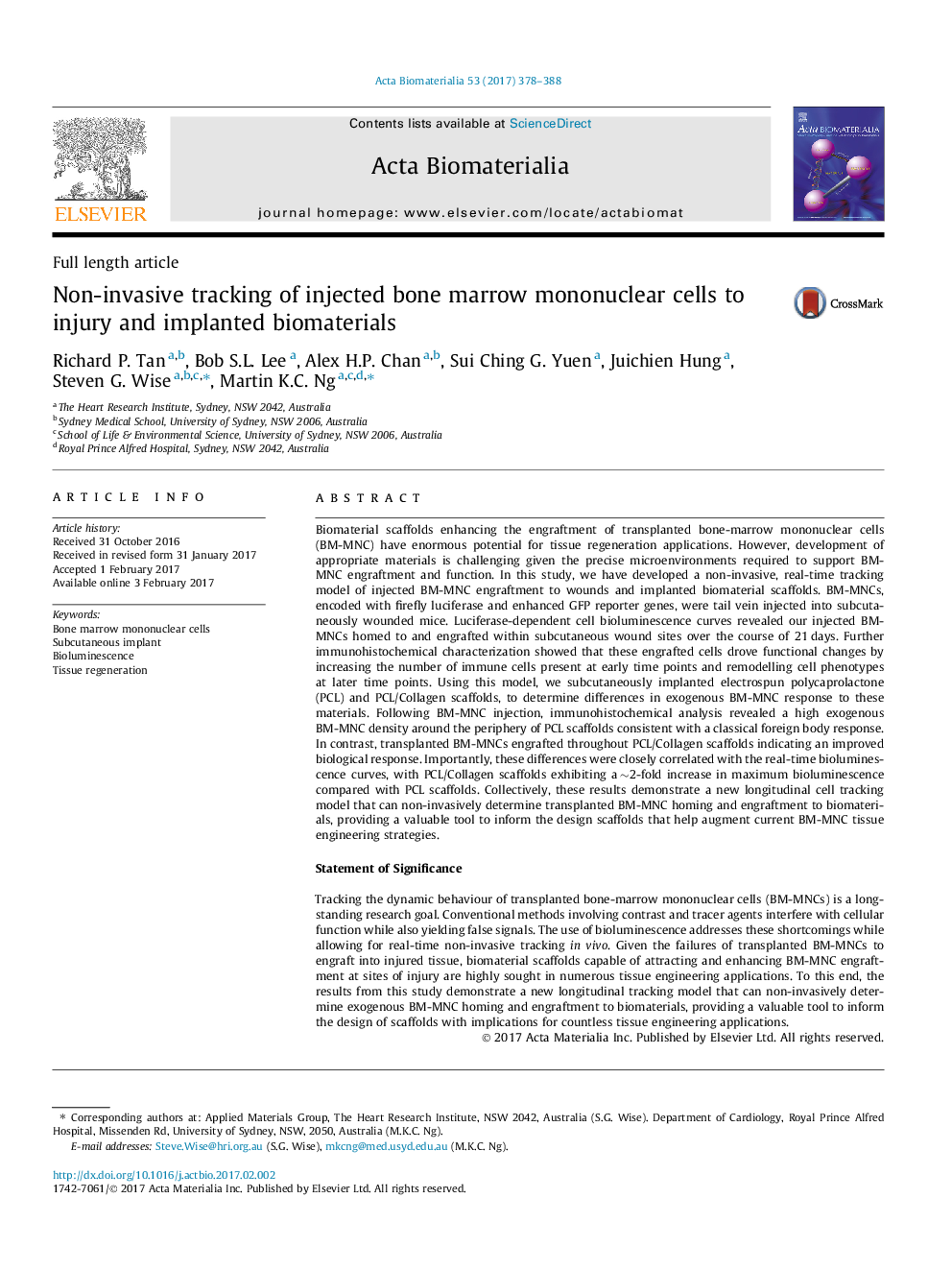| کد مقاله | کد نشریه | سال انتشار | مقاله انگلیسی | نسخه تمام متن |
|---|---|---|---|---|
| 6449591 | 1415933 | 2017 | 11 صفحه PDF | دانلود رایگان |
Biomaterial scaffolds enhancing the engraftment of transplanted bone-marrow mononuclear cells (BM-MNC) have enormous potential for tissue regeneration applications. However, development of appropriate materials is challenging given the precise microenvironments required to support BM-MNC engraftment and function. In this study, we have developed a non-invasive, real-time tracking model of injected BM-MNC engraftment to wounds and implanted biomaterial scaffolds. BM-MNCs, encoded with firefly luciferase and enhanced GFP reporter genes, were tail vein injected into subcutaneously wounded mice. Luciferase-dependent cell bioluminescence curves revealed our injected BM-MNCs homed to and engrafted within subcutaneous wound sites over the course of 21 days. Further immunohistochemical characterization showed that these engrafted cells drove functional changes by increasing the number of immune cells present at early time points and remodelling cell phenotypes at later time points. Using this model, we subcutaneously implanted electrospun polycaprolactone (PCL) and PCL/Collagen scaffolds, to determine differences in exogenous BM-MNC response to these materials. Following BM-MNC injection, immunohistochemical analysis revealed a high exogenous BM-MNC density around the periphery of PCL scaffolds consistent with a classical foreign body response. In contrast, transplanted BM-MNCs engrafted throughout PCL/Collagen scaffolds indicating an improved biological response. Importantly, these differences were closely correlated with the real-time bioluminescence curves, with PCL/Collagen scaffolds exhibiting a â¼2-fold increase in maximum bioluminescence compared with PCL scaffolds. Collectively, these results demonstrate a new longitudinal cell tracking model that can non-invasively determine transplanted BM-MNC homing and engraftment to biomaterials, providing a valuable tool to inform the design scaffolds that help augment current BM-MNC tissue engineering strategies.Statement of SignificanceTracking the dynamic behaviour of transplanted bone-marrow mononuclear cells (BM-MNCs) is a long-standing research goal. Conventional methods involving contrast and tracer agents interfere with cellular function while also yielding false signals. The use of bioluminescence addresses these shortcomings while allowing for real-time non-invasive tracking in vivo. Given the failures of transplanted BM-MNCs to engraft into injured tissue, biomaterial scaffolds capable of attracting and enhancing BM-MNC engraftment at sites of injury are highly sought in numerous tissue engineering applications. To this end, the results from this study demonstrate a new longitudinal tracking model that can non-invasively determine exogenous BM-MNC homing and engraftment to biomaterials, providing a valuable tool to inform the design of scaffolds with implications for countless tissue engineering applications.
336
Journal: Acta Biomaterialia - Volume 53, 15 April 2017, Pages 378-388
